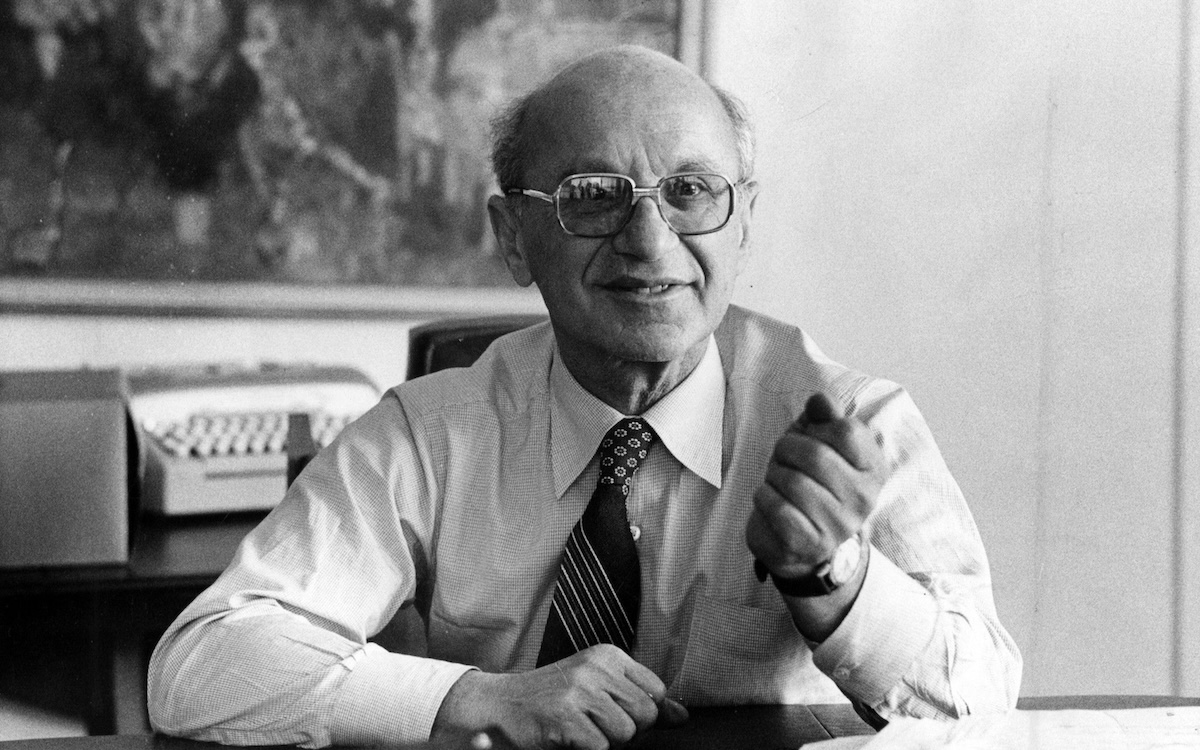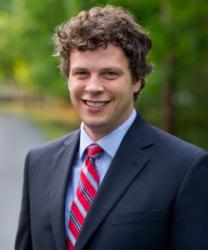When tasked with reviewing Jennifer Burns’ Milton Friedman: The Last Conservative, I was unaware that I was going to read one of the most engaging works of intellectual history I have ever encountered. It is even more surprising because I am not an economist nor do I work in finance. I’m a political scientist, but what Burns has assembled in her nearly 500-page book is a combination of sheer intellectual talent, writing chops, and dogged research the likes of which should impress anyone from any background. What is more, Burns is fair to her subject. No doubt conservative readers expected some kind of lengthy diatribe against one of the most important free market economists of the last century, but let me assure those readers that she does no such thing. Rather, she uses Friedman as a focal point for explaining the development of monetarism from its forebears in people like Frank Knight and Henry Simons to Gary Becker and George Stigler. Along the way, she recovers and celebrates women who suffered undue obscurity despite their essential role in co-founding monetarism and building Friedman’s career.
The book is rich enough to review from several angles. Many have already examined the central theme of Friedman’s successful effort to lay out a conservative economic alternative to the reigning Keynesianism and, later, econometrics. Another possibility is to review it as the incorporation of dueling schools of economics into 20th century national and international politics. Yet another would be the incredible debt the world owes to Jewish immigrants and their children for sharing their gifts with the world. The aspect of the book I will focus on, however, is one that others might miss or even find the least interesting—academic institution building.
The center of the book examines how Friedman worked his way into academia and improved his reputation as something of a crank by developing relationships with colleagues, funders, and institutions that supported him. What on the surface looks like an exploration of the usual academic politics of Friedman’s day is, in fact, a demonstration of Friedman as a conservative institution builder. These days, too many ambitious conservatives avoid the hard work of building lasting institutions with broad influence in favor of personal brands they can monetize with outrage engagement. Their institutions exist primarily to support this personal brand and will not last a second after that brand dies. Friedman was different. His institutions have lasted, even though he himself certainly had a personal brand!
Friedman arrived at the University of Chicago in 1932 after a successful undergraduate career in mathematics and economics at Rutgers University. When he arrived, Frank Knight and Henry Simons had already begun laying the foundations of what would become known as “the Chicago School,” which emphasized money and banking rather than aggregates and the fiscal policy of the soon-to-be dominant Keynesianism. Also, there already existed the National Bureau of Economic Research (NBER), which was often friendly to the Chicago School despite the influence of important institutional economists from Columbia University. Institutionalists were the holdovers from the Progressive Movement and centered their attention on using the state to prevent and dismantle monopolies, which they saw as inevitable in a capitalist economy without state intervention. At first, Knight, Simons, and Friedman’s eventual brother-in-law, Aaron Director, helped form Friedman into a proper Chicago economist who celebrated entrepreneurship and price theory. The two worked together because entrepreneurs could use prices to determine opportunities, and monetary policy worked to stabilize the economy as entrepreneurs operated within that economy.
Friedman began his academic career during the Great Depression and worked with statistical data, which new federal agencies collected during the New Deal. His experience in government gave him a keen sense of the importance of empirical results over elegant theories, thus concentrating what he already had learned from Knight, Simon, and Director. A key experience that Burns tells in beautiful detail was Friedman’s work to develop a better metal alloy for airplanes. He worked out a theory for what alloys would work best using pure mathematics, only to discover, after testing, that the alloys he recommended were inferior to the ones already in use. For Friedman, the lesson was never to treat a model as proven until the results were in.
For Friedman to have any influence required him to have more than just an academic post—he needed also to attract talent, money, and prestige. After a year at the University of Minnesota, he returned to the University of Chicago, where he immediately began recruiting back all the best Chicago students he had known as a graduate student. When his mentor Simons died by suicide, Friedman stepped in to lead the economics department as well as challenge the Cowles Commission, founded by Alfred Cowles in 1932, for dominance on campus. Composed of largely European expats, the commission favored increasing complex mathematical models of the economy, the kind of economics Friedman loathed. After a protracted struggle, including a play to capture a Ford Foundation grant from Cowles, Friedman was able to send Cowles off to Yale and preserve his, well, monopoly on University of Chicago economics.
What made this possible was Friedman’s work with the Volker Fund, the primary funder of his alternative Free Market Study, a modest regular meeting of Chicago economists that grew into a powerhouse itself. The head of the forum was Director, whose penchant never to finish any writing projects had led him never to finish his Ph.D. Even so, Friedman saw to Director’s appointment to the Chicago law school, where Director promptly began the study of law and economics. Burns describes in detail how Friedman carefully screened potential faculty who could work within the overall vision of the department, although one such appointment, Harry Johnson, proved to be an issue for him. The result of Friedman’s work was the building of a department that, in turn, established monetarism as a serious contender in economic policy, one that eschewed fiscal counter-cyclical spending in favor of Federal Reserve–managed interest rates.
As Burns tells it, Anna Schwartz is the unsung hero of the Chicago School, even if she was a Columbia Ph.D. Originally his superior in a research project that would become the magisterial A Monetary History of the United States, 1867–1960, Schwartz impressed Friedman with her incredible grasp of archival work and ability to synthesize complex raw data from state government account records. She was also the one who insisted that their research broaden its dates for study to get a truly comprehensive history of monetary policy. One might expect that someone as rhetorically domineering and ambitious as Friedman to be a nightmare to work with, but he admired and encouraged Schwartz and routinely fought for her to secure her Ph.D. from Columbia despite the constant meddling and not a little chauvinism of the faculty there.
Because of their work challenging Keynesian assumptions on consumption, Friedman hoped to recruit Margaret Reid to replace the sole woman at Chicago, Hazel Kyrk, after her retirement. Reid and Brady has used historical records of household consumptions to disprove the Keynesian view that consumption increases as income does. Their data showed that household consumption depends on the expected lifetime income, not just the present income. Indeed, the work of Reid and Brady contributed directly to Friedman’s own book A Theory of the Consumption Function, and he made a point of saying so in the preface to the book. He also pursued an additional tenure line for Dorothy Brady, although he failed. Brady landed at the Wharton School at the University of Pennsylvania, happily.
Friedman’s ongoing commitment to building up the Chicago School as an institution meant that he had to find talent and recruit it as much as possible. It was not merely out of self-interest that he did this; he very much admired these scholars for their work and also knew that everyone would benefit if they could work together at the same prestigious institution. Perhaps because Friedman’s wife, Rose, had previously been a capable economics student, Milton always took seriously the contributions of women to the field, something most other male economists did not. Burns regards this as one of the secrets to his success, and her case is a strong one.
It was only after Friedman had helmed the Chicago School—building its faculty, funding its members, helping them secure publication deals—that he could then focus on implementing the Chicago School’s ideas, informing real-world policies. His efforts with the Richard Nixon administration floundered as his former mentor, Arthur Burns, violated Chicago School prohibitions on price controls and attempted to freeze Friedman out. Friedman was tenacious to end the price controls but also attempted for months to win Burns back over. Burns (the author, not the Nixon appointee) reflects on how Friedman’s treatment of Arthur Burns, as well as other male intellectual mentors, could have been Friedman’s way of handling his father’s death when Milton was a senior in high school. This observation makes Friedman’s tenacious struggle with Burns even more poignant, as if Burns’ turning his back on Friedman was like Friedman’s losing his father all over again.
By the end of Friedman’s academic career, however, he had built an institution that would last even beyond its origins as “the Chicago School.” Friedman’s economics are now embedded in the Federal Reserve and other national banks. So numerous were his disciples that they found their way into Chile. The chapter describing Friedman’s visit to the country and his influence shows Burns’ evenhandedness, despite the Pinochet history. Her emphasis is on how Friedman, a man full of ambition but without guile, could not fathom why his visit was any different from other visits to counsel other authoritarian regimes on economic liberalization. Burns leaves the occasion for the reader to judge, and my judgment was that Friedman’s experience in Chile is a perfect example of how even a historically minded economist like Friedman could fall victim to thinking too abstractly about regimes; they are not simply the police that protect the central bank.
For those who remember Friedman as an elder stateman of economics taking questions from students, these years of Friedman’s academic prime seem a bit arcane, but Friedman would never have been televised doing this work had it not been for the mentors who formed him, the foundations who funded him, and last but not least the underappreciated work of talented women who sometimes did much of the work. Conservatives should take note of Friedman as an exemplar of institution building, and perhaps pair his example with that of Leonard Leo and the Federalist Society. Social media engagement numbers are fleeting. Does anyone remember Milo Yiannopoulos anymore? In 50 years, no one will be reading Yiannopoulos’ Dangerous, but they will still be reading Capitalism and Freedom. I also hope they will be reading Jennifer Burns’ Milton Friedman: The Last Conservative because there is so much to learn from Friedman’s example, to say nothing of how to write a damned good book.

